The creativity it takes to teach children always requires keeping an eye out for books and resources that can connect the stories of our faith to the experiences of our children. There’s nothing more exciting than watching a child’s imagination come alive with questions and excitement for God. I shared earlier this year my favorite collection of books for enriching young faith, but there are new books available that I wanted to share. Like before, some books are explicitly faith based, others offer reflection on a topic that ties to a theological theme or particular piece of scripture. I think it’s powerful to use books that are not explicitly faith based. I love seeing kids light up when they make the connection between what they are reading at school and their faith.
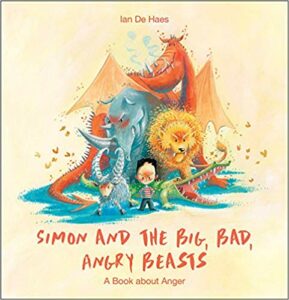 Simon and the Big, Bad, Angry Beast: A Book About Anger by Ian De Hais
Simon and the Big, Bad, Angry Beast: A Book About Anger by Ian De Hais
Anger is a destructive feeling, but it is one we all experience. Teaching kids to navigate anger also teaches them mindfulness, kindness and compassion. We can’t teach the fruits of the spirit without teaching our kids how to manage the feelings and actions that make those fruits difficult grow. Simon and the Big, Bad, Angry Beast is a book that captures the nuance of anger–how its power can make you feel good but how it destroys connection and relationships. This book is a must have. I also really love the five pages of parent and teacher resources in the back–which give parents a way to engage the book and help their kids process anger.
 Ruby Finds a Worry by Tom Percival
Ruby Finds a Worry by Tom Percival
Matthew 6 says “do not worry about tomorrow, for tomorrow will bring worries of its own. Today’s trouble is enough for today.” Our kids have worries big and small, often unseen to our adult eyes. God wants to meet our kids in their worries and help them make sense of them. Ruby Finds a Worry is an excellent resource to bridge the scriptures on worry with a concrete conversation on emotional intelligence, friendship and connection.
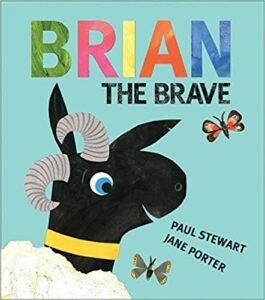 Brian the Brave by Paul Stewart
Brian the Brave by Paul Stewart
It is not only socially responsible to teach our kids about how to navigate difference, but it’s faithful. I think of the story in Matthew 8 where Jesus heals the leper, a story that says just as much about God’s healing power as it does Jesus’s willingness to spend time with people who were considered outsiders. Brian the Brave is about a flock of sheep that want to see their differences until a wolf comes along and they realize each of their gifts can help the whole. This would also be a good book to illustrate to younger children the teaching in 1 Corinthians about there being many parts but one body.
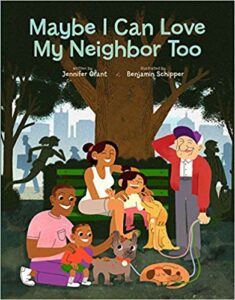 Maybe I Can Love my Neighbor Too by Jennifer Grant
Maybe I Can Love my Neighbor Too by Jennifer Grant
The core scripture of Christian faith in Mark 12 says “you shall love the Lord your God with all your heart, and with all your soul, and with all your mind, and with all your strength…You shall love your neighbour as yourself. There is no other commandment greater than these.” In this follow up book to Maybe God Is Like That Too, Jennifer Grant paints a picture of what it means to love our neighbor in concrete ways that capture young imaginations in Maybe I Can Love My Neighbor Too.
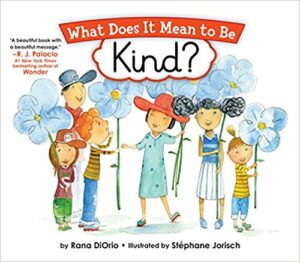 What Does it Mean to be Kind? by Rana DiOrio
What Does it Mean to be Kind? by Rana DiOrio
In Paul’s letter to the Corinthians he talks about what love looks like in community “love is patient, love is kind…” but how do we teach our kids what kindness looks like in their lives? What Does It Mean to Be Kind? teaches children how to imagine kindness in the world and in their relationships. This book takes the abstract concept of kindness and give concrete examples and ideas.
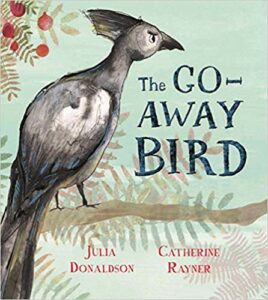 The Go Away Bird by Julia Donaldson
The Go Away Bird by Julia Donaldson
“Two are better than one, because they have a good return for their labor: if either of them falls down, one can help the other up.” The passage from Ecclesiastes is commonly used in weddings but it’s also an excellent passage to teach children about friendship. The Go Away Bird is about a bird that doesn’t think it needs any friends, until a big bird of prey comes and then The Go Away Bird discovers that friends might be important.
 Paul and His Friends by Rebekah McLeod Hutto
Paul and His Friends by Rebekah McLeod Hutto
I love this book as a basic overview to all the evangelist that helped Paul in his ministry. Paul introduces each of his friends and how they helped him in his faith and spreading the love of Jesus. One of the features of Paul and His Friends that I love is that in the end there are scripture references, the animal characters of each apostle is explained (spoiler, each character is depicted as an animal and each animal is drawn from metaphor or early Christian art) and there is even a page for kids to draw a picture of their friends in faith.
 I Am Love: A Book of Compassion by Susan Verde
I Am Love: A Book of Compassion by Susan Verde
This book is the perfect companion to the “love verses” from 1 Corinthians as it talks about the multifaceted aspects of love–that love is not one thing but the compilation of many small kindnesses. I Am Love book starts with noticing that someone else is hurting and spins into a lovely illustrated exploration of what love is–compassion, forgiveness, connection, effort, remembering and creative.
 When Sadness is at Your Door by Eva Eland
When Sadness is at Your Door by Eva Eland
This is a book that I talked about in my round up of books to help children with grief and emotional intelligence, but I think it has specific faith connections. The scriptures are rich with lament and our faith teaches that God is with us in our heart ache. Specifically when we immerse ourselves in the Psalms. When Sadness is at Your Door would be an excellent book to talk about sadness, teach emotional intelligence and talk about God’s presence with us when we are sad. When I talk to my own kids about sadness, I also talk about the beloved community that surrounds and supports them in their faith journey even when they are sad and the role of prayer in connecting to God.
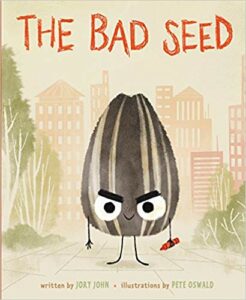 The Bad Seed by Jory John
The Bad Seed by Jory John
This is another book that isn’t explicitly faith based but absolutely captured my children’s imagination and spurred conversation about friends and classmates that was depthful and rich. This book follows a “bad seed” that makes poor choices but discovers that making bad choices isn’t great and that he would really like to be a good seed. The Bad Seed is a great book to talk about choices, how God created us good, how to make choices that are rooted in God’s love and how to understand ourselves as mostly good even when we make mistakes. This is a great book to tie into a conversation or lesson about making wise choices, sin, forgiveness and grace.
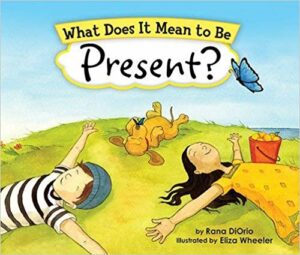 What Does it Mean to be Present? By Rana DiOrio
What Does it Mean to be Present? By Rana DiOrio
Our kids are bombarded with stimuli, on a neurological level they need to practice stillness, quiet and attention. Not sitting still but quieting the mind from the many distractions and worries modern life throws at them. The Christian tradition is full of rich spiritual practices that help quiet the mind and center the spirit, because presence is about being attentive to God’s presence in the moment so that we can make Spirit-filled choices. What a gift to our children to teach them the spiritual practice of presence. What Does it Mean to be Present? Is an excellent book to teach children about being present.
We love reading and so many books and stories create the opportunity to talk about faith. When we make faith a part of our reading lives we make faith part of our daily lives. It’s a gift to teach our kids to notice God in their relationship, community and reading. If you enjoyed this list, I have another one with 20 Books to Enrich Young Faith you can check out.
Like what you’ve read? Want more? Sign up for my twice a month newsletter (because we’re not spammy) and get original content you can’t find here on the blog. Reflections on faith and living, book recommendations and other good, nerdy fun. Sign up HERE.

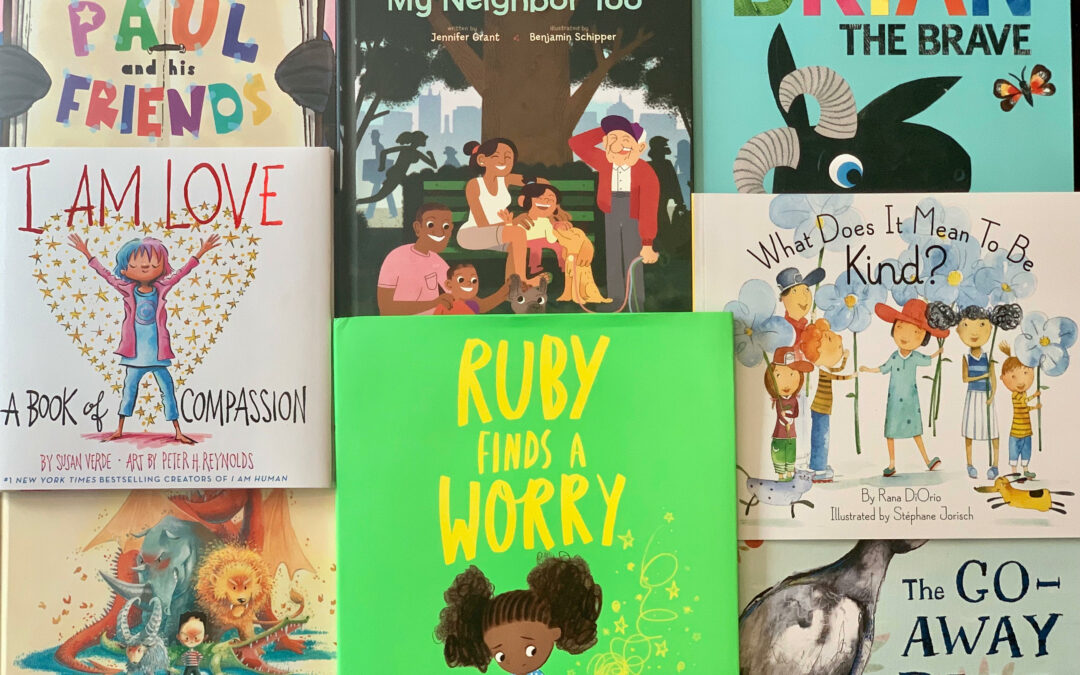

Recent Comments